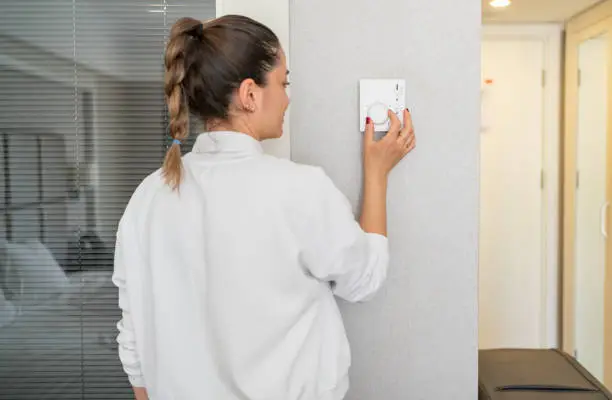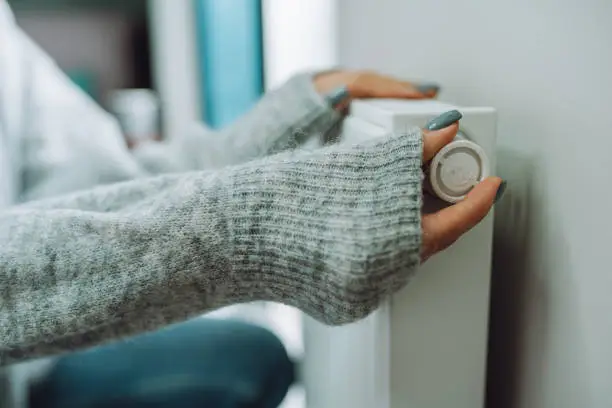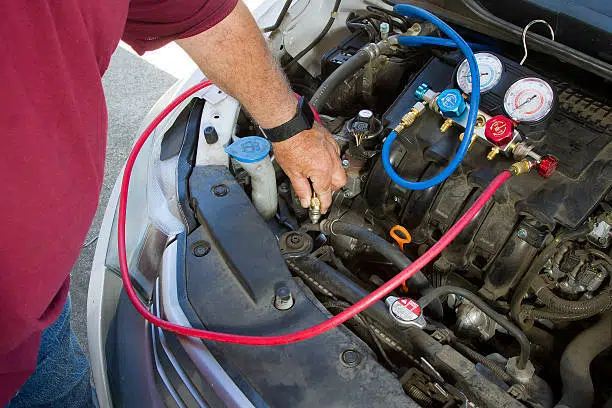
Table of Contents
Indoor air quality (IAQ) is one of those aspects of home comfort that we often overlook. Since we can’t see the air we breathe, it’s easy to ignore potential issues. However, for residents of Canada, where the climate can vary greatly with the seasons, it’s especially important to monitor the air quality in our homes. This article will guide you on how to test your home’s air quality and what steps to take to improve it.
Why Indoor Air Quality Matters
Have you ever wondered why you or your family members frequently sneeze or have allergy symptoms? Poor indoor air quality could be the culprit behind these and other health issues. Polluted air can lead to respiratory problems, worsen allergies, and even contribute to chronic illnesses. Conversely, good air quality helps us feel better, improves sleep, and enhances overall comfort at home.
Common Indoor Air Pollutants
So, what can contaminate the air in our homes? Let’s look at some of the main sources:
- Dust and Dust Mites: Household dust, which accumulates on furniture and floors, can contain dust mites—tiny creatures that can trigger allergies.
- Mold: Particularly in damp, poorly ventilated areas like bathrooms and basements. Mold not only looks bad but can also be harmful to health.
- Pet Dander: Hair and skin flakes from pets can cause allergic reactions.
- Volatile Organic Compounds (VOCs): These are emitted by many household products, such as paints, cleaning supplies, and even furniture.
- Radon: This radioactive gas can seep into homes from the soil and is a leading cause of lung cancer.
- Carbon Dioxide (CO2): High levels of CO2 can indicate poor ventilation.
- Carbon Monoxide (CO): A dangerous gas that can be emitted by malfunctioning heating appliances.
Find out about the positive effects of using a humidifier in your home in our previous article.
https://thehvacservice.ca/positive-impacts-of-using-a-humidifier-in-your-home/
Signs of Poor Indoor Air Quality
How can you tell if your home’s air quality is poor? Here are a few signs to watch for:
- Frequent Allergic Reactions: If you or your family members are constantly sneezing, coughing, or have nasal congestion, it could be due to poor indoor air quality. Allergens such as dust mites, pet dander, and pollen can accumulate inside your home, triggering these reactions. If these symptoms improve when you leave home, it’s a strong indicator that the indoor air quality may be the issue.
- Unusual Odors: Persistent, unusual smells can be a sign of poor air quality. The smell of mold, for example, can indicate the presence of moisture and mold growth in hidden areas like behind walls or under floors. Chemical smells might suggest high levels of VOCs from cleaning supplies, paints, or new furniture. If you notice these odors regularly, it’s worth investigating further.
- Visible Mold: Mold growth is a clear sign of a moisture problem, which can lead to poor air quality. Black or green spots on walls, ceilings, or around windows are common indicators. Mold can produce allergens and irritants, and in some cases, toxic substances. Even if the mold isn’t visible, a musty smell can be a telltale sign of hidden mold.
- High Humidity: Consistently foggy windows and damp walls can indicate high humidity levels in your home, which contribute to mold growth and dust mites. High humidity makes the air feel stuffy and can exacerbate respiratory problems. Maintaining balanced humidity levels is crucial for both comfort and air quality.
- Difficulty Breathing: If you experience difficulty breathing, particularly at night or after returning home, it may be due to pollutants like dust, VOCs, or CO2. Poor air quality can exacerbate asthma and other respiratory conditions, making it hard to breathe comfortably. If you find yourself breathing easier when you’re outside, it’s a strong indicator that your indoor air needs attention.
Methods for AC Quality Testing at Home

Now that you know what to look for, let’s explore how you can test your home’s air quality.
Using Air Quality Monitors
One of the most effective ways to monitor your home’s air quality is by using air quality monitors. These modern devices can measure various pollutants, such as PM2.5 (fine dust particles), VOCs, CO2, and even radon. Air quality monitors often provide real-time data, allowing you to see how the air quality changes throughout the day. To get a comprehensive view, install the air quality monitor in your home and track the readings over several days. Place it in different rooms to identify specific problem areas, as air quality can vary significantly from one part of your home to another.
Visual and Olfactory Inspection
Besides air quality monitors, another simple yet effective approach is to conduct a visual and olfactory inspection. This involves using your senses to detect potential air quality issues. Start by inspecting your home for visible mold and unusual odors. The smell of dampness or chemicals can indicate problems like mold growth or high VOC levels. Pay particular attention to hidden areas such as behind furniture, in closets, and around plumbing fixtures, as these spots are prone to moisture buildup. Bathrooms, basements, and kitchens are common areas where moisture and mold can accumulate. Look for water stains, discoloration, and condensation, which are signs of high humidity and potential mold growth.
Simple Tests for Specific Pollutants
For specific pollutants, you can use simple tests that are available in stores. Radon test kits are easy to use and can help you detect the presence of this dangerous gas. Place the test in your basement or ground floor, where radon is most likely to accumulate. Carbon monoxide detectors are another essential tool. Install these devices near heating appliances, bedrooms, and living areas to provide early warning of dangerous CO levels. Carbon monoxide is a deadly gas, and having detectors in place can save lives by alerting you to its presence before it reaches harmful levels.
Professional AC Quality Testing
For more accurate and comprehensive results, consider hiring professionals to test your home’s air quality. Professional AC quality testing offers several advantages. Experts can conduct a full analysis of your air for all major pollutants using advanced equipment and methods that provide detailed information. The accuracy of professional equipment is typically higher than most DIY tools, making it particularly important for detecting low levels of pollutants that can still be harmful over time.
After testing, professionals can also provide tailored improvement recommendations. They can identify specific sources of pollutants and suggest actions like improving ventilation, sealing leaks, or upgrading your HVAC system. This comprehensive approach ensures that all potential air quality issues are addressed effectively.
For professional AC quality testing in Canada reach out to HVAC Service Solutions. Contact us today for a comprehensive air quality assessment and find out how we can help you breathe easier.
Improving Indoor Air Quality

So, you’ve identified problems—what’s next? Here are some steps to improve your indoor air quality:
Short-Term Solutions
One of the most effective short-term solutions for improving indoor air quality is using air purifiers. When choosing an air purifier, look for models with HEPA filters, which are designed to capture 99.97% of particles as small as 0.3 microns, including dust, pollen, and pet dander. Place these purifiers in bedrooms and living areas where you spend the most time to maximize their effectiveness. Air purifiers can significantly reduce the concentration of airborne pollutants and provide immediate relief from symptoms of poor air quality.
Increasing ventilation is another quick and effective way to improve indoor air quality. Simply opening windows can allow fresh air to circulate and dilute indoor pollutants. This is especially important when using chemical products like cleaning supplies or paint, which can release VOCs into the air. Additionally, using exhaust fans in areas such as kitchens and bathrooms can help remove moisture and odors, preventing the buildup of pollutants. Ensure that exhaust fans are vented to the outside to be most effective.
Regular cleaning is crucial for maintaining good indoor air quality. Dust and vacuum frequently, paying special attention to high-traffic areas and places where dust and allergens tend to accumulate, such as carpets, drapes, and upholstered furniture. Use hypoallergenic cleaning products to avoid introducing new irritants into your home. Regularly washing bedding, curtains, and other fabrics can also help reduce the presence of dust mites and allergens. Keeping your home clean not only improves air quality but also creates a more pleasant living environment.
Long-Term Solutions
For long-term improvements, consider upgrading your HVAC system. Modern HVAC systems come with enhanced filtration capabilities and humidity control features that help maintain high air quality throughout the year. Look for systems with energy-efficient features and programmable thermostats to optimize performance and reduce energy costs. An upgraded HVAC system can provide better ventilation, more consistent temperature control, and improved air filtration, making your home a healthier and more comfortable place to live.
Another long-term solution is to install whole-house air purification systems. These systems work in conjunction with your HVAC system to provide continuous air purification throughout your home. They can include UV lamps or ionizers that effectively clean the air by eliminating airborne pathogens, bacteria, and viruses. Whole-house air purifiers are particularly beneficial for individuals with respiratory conditions or allergies, as they can significantly reduce the concentration of allergens and other pollutants in the air. Investing in a whole-house air purification system is a proactive step towards maintaining optimal indoor air quality and promoting the health and well-being of your family.
Regular HVAC maintenance is essential for keeping your system operating efficiently and effectively. Schedule annual maintenance checks to ensure that your HVAC system is in good working order and to address any potential issues before they become major problems. This includes changing filters regularly, cleaning ducts and vents, and inspecting the system for signs of wear or damage. By keeping your HVAC system well-maintained, you can ensure that it continues to provide clean, healthy air for years to come.
Seasonal Tips for Canadian Homes
In Canada, climate conditions can vary greatly, requiring a specific approach to maintaining air quality.
Winter
- Humidity Control: Use humidifiers to prevent overly dry air, but ensure humidity levels don’t exceed safe limits to avoid mold growth. Aim for a humidity level between 30% and 50%.
- Proper Ventilation: During winter, windows are often closed, so use ventilation systems to refresh indoor air. Heat recovery ventilators (HRVs) can help bring in fresh air while retaining heat.
Summer
- Reducing Humidity: In summer, air can be too humid. Use dehumidifiers to maintain optimal humidity levels. Keep your home’s humidity below 60% to prevent mold and dust mite growth.
- Effective Use of Air Conditioners: Air conditioners not only cool but also clean the air. Regularly clean filters and maintain the system to ensure it operates efficiently. Use the “dry” mode on your AC to reduce humidity.
Conclusion
The quality of air in your home is a crucial aspect that affects your health and comfort. Testing the air and taking steps to improve it are essential measures for you and your family’s well-being.
If you have any questions or need professional AC quality testing, our team at HVAC Service Solutions is always ready to help. Contact us for a comprehensive assessment and advice on improving your home’s air quality.
Frequent Asked Questions
What are the common signs of poor indoor air quality?
Poor indoor air quality can manifest in various ways. Frequent allergic reactions, such as sneezing, coughing, and nasal congestion, are common indicators. Unusual odors, like the smell of mold or chemicals, may suggest underlying problems. Visible mold growth on walls or ceilings is another clear sign, as well as high humidity levels leading to foggy windows and damp walls. Difficulty breathing, especially at home or at night, could also signal poor air quality, particularly if symptoms improve when outside.
How can I test the air quality in my home?
Testing indoor air quality can be done through DIY methods or by hiring professionals. DIY options include using air quality monitors to measure pollutants like PM2.5, VOCs, CO2, and radon. Visual and olfactory inspections involve checking for mold growth and unusual odors. Specific pollutant tests, such as radon test kits or carbon monoxide detectors, are also available. Professional testing services offer comprehensive analysis and may use advanced equipment for accurate results.
What are some short-term solutions for improving indoor air quality?
Short-term solutions focus on immediate actions to reduce indoor air pollutants. Using air purifiers with HEPA filters can effectively capture dust, allergens, and other particles, providing quick relief from poor air quality symptoms. Increasing ventilation by opening windows and using exhaust fans helps to remove stale air and pollutants, improving air circulation. Regular cleaning, including vacuuming and dusting, helps to reduce dust and allergen buildup, contributing to better indoor air quality.
What are some long-term solutions for improving indoor air quality?
Long-term solutions involve addressing underlying factors that affect indoor air quality. Upgrading HVAC systems with enhanced filtration and humidity control capabilities ensures consistent air purification and moisture management year-round. Installing whole-house air purification systems provides continuous air cleaning throughout the home, targeting airborne pathogens and pollutants. Regular HVAC maintenance checks, including filter changes and duct cleaning, help to maintain system efficiency and effectiveness over time.
How can I interpret air quality test results?
Interpreting air quality test results involves understanding the significance of pollutant levels and their potential health effects. High levels of dust, allergens, VOCs, or radon may indicate the need for specific interventions to improve indoor air quality. Comparing test results to recommended guidelines or standards can help prioritize actions and determine the severity of air quality issues in your home.
What are the benefits of whole-house air purification systems?
Whole-house air purification systems offer several advantages for improving indoor air quality. These systems provide continuous air cleaning throughout the home, effectively reducing airborne pathogens, allergens, and pollutants. Unlike portable air purifiers, whole-house systems treat the entire indoor air volume, ensuring consistent air quality in every room. Additionally, whole-house systems are low-maintenance and operate silently, providing hassle-free air purification without the need for multiple devices.
How often should I schedule HVAC maintenance checks?
It’s recommended to schedule HVAC maintenance checks at least once a year to ensure optimal system performance. During maintenance checks, HVAC professionals inspect the system, change filters, clean ducts and vents, and address any issues that may affect air quality or efficiency. Regular maintenance helps to prolong the lifespan of your HVAC system, prevent breakdowns, and ensure that it continues to provide clean, comfortable air for your home.
What seasonal tips can help maintain indoor air quality in Canadian homes?
In winter, focus on humidity control by using humidifiers to prevent dry air, but avoid excessive moisture to prevent mold growth. Proper ventilation is crucial, especially when windows are closed, so consider using heat recovery ventilators to bring in fresh air while retaining heat. In summer, reduce humidity levels with dehumidifiers to prevent mold and mildew growth. Use air conditioning wisely to maintain comfortable indoor temperatures and improve ventilation by using exhaust fans in kitchens and bathrooms.
What are the risks associated with high levels of radon and carbon monoxide?
High levels of radon pose a significant health risk, as exposure to this radioactive gas increases the risk of lung cancer. Radon is odorless and colorless, making it difficult to detect without proper testing. Carbon monoxide is a deadly gas that interferes with oxygen transport in the blood, leading to CO poisoning. Symptoms of CO poisoning include headache, dizziness, nausea, and fatigue. Both radon and carbon monoxide require immediate measures to reduce exposure and ensure a safe indoor environment.
How can I get more information or assistance with improving indoor air quality?
For more information or assistance with improving indoor air quality, you can contact HVAC Service Solutions. Our team of experts can provide comprehensive air quality assessments, personalized advice, and professional services to help you create a healthier and more comfortable home environment.
Share



















